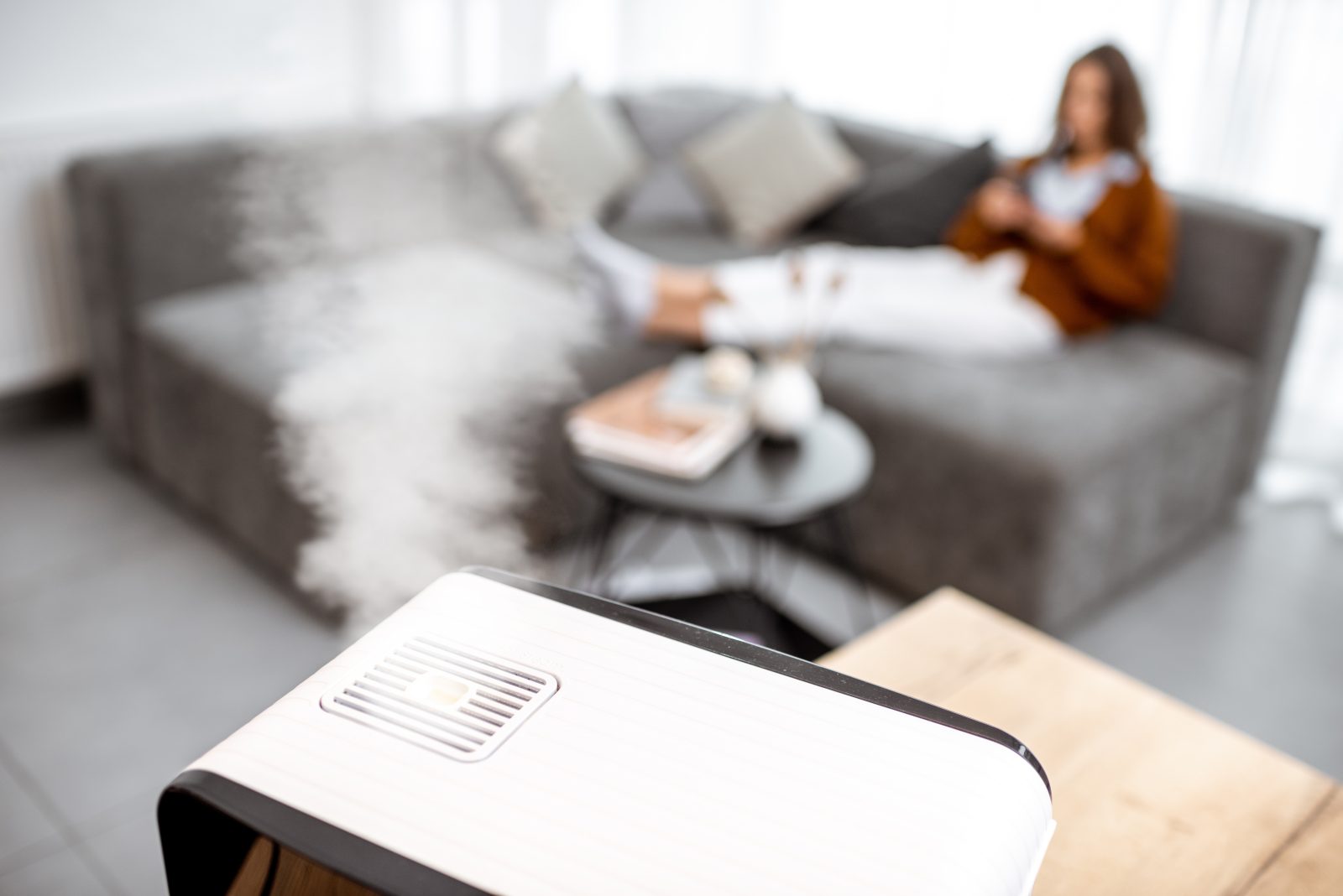In the pursuit of creating a comfortable and healthy indoor environment, air quality plays an essential role. Among the various factors influencing the air we breathe, humidity is a crucial element often overlooked. As we delve into the intricacies of air humidifiers, this article aims to shed light on their myriad health benefits. It offers valuable insights into how to use them effectively, when to incorporate them into your daily routine, and essential considerations to ensure their proper functioning.
The optimal humidity levels range between 40% and 60% and maintaining these can significantly impact our well-being. One tool that has gained prominence in achieving this balance is the humble air humidifier.
In our increasingly climate-controlled living spaces, understanding the role of air humidifiers is essential for mitigating the adverse effects of dry air on respiratory health, skin, and overall comfort. From maintaining your skin’s barrier and preventing irritated eyes to alleviating respiratory issues, the advantages of maintaining adequate humidity levels are manifold.
Uncover the secrets to a healthier, more comfortable living environment through the judicious use of air humidifiers.
What is a humidifier good for?
- Increases air quality
A humidifier serves the primary purpose of improving indoor air quality by increasing moisture.
Signs of dry air include:
- Sore or dry throat: higher indoor humidity levels are associated with reduced throat dryness or irritation.
- Static electricity: dry air promotes static charge buildup, increasing static electricity.
- Constant thirst: individuals in drier environments may experience more signs of dehydration.
- Worsened asthma symptoms: dry air can trigger airway narrowing, potentially worsening asthma symptoms.
- Nosebleeds: dry air can dry out nasal passages, making blood vessels more fragile and increasing the likelihood of nosebleeds.
- Dry skin or lips: low humidity contributes to a compromised skin barrier function and an increased risk of mechanical stress.
- Stress: adequate humidity levels in workplaces have been linked to a 25% reduction in stress compared to drier environments.
Some other indicators that you may need a humidifier include congestion, throat irritation, allergies, or symptoms of infection.
If you observe these symptoms, it may indicate that the indoor air is too dry. A humidifier can be an effective solution to alleviate these issues and enhance overall air quality.
- May help reduce flu symptoms
When you are sick, particularly with upper respiratory infections such as the flu, COVID-19, or a cold, using a humidifier can be beneficial. A humidifier helps increase air moisture, which can alleviate associated symptoms.
Studies have indicated that lower humidity levels are linked to increased flu outbreaks in temperate climates.
Moreover, research suggests that the use of humidifiers resulted in a reduction in flu-positive samples compared to control rooms. Therefore, the use of humidifiers during illness may potentially decrease the risk of infection.
- May contribute to more restful sleep
Maintaining the right level of humidity in your bedroom is essential for a good night’s sleep. When you sleep, especially for extended periods without drinking water, and if you sleep with your mouth open, your throat can become dry. Dry air in your bedroom can contribute to discomfort and difficulty sleeping.
Using a humidifier and employing one of the 17 proven strategies for enhanced sleep quality can work wonders.
For individuals using a continuous positive airway pressure (CPAP) machine for sleep apnea, many CPAP devices come equipped with integrated humidifiers. The use of heated humidity in a CPAP machine can help alleviate issues such as dryness in the nose and throat, contributing to a more comfortable sleep experience.
How to properly clean and refill a humidifier
To maintain a healthy environment and prevent the growth of mold, bacteria, and other microorganisms in your humidifier, it’s crucial to follow proper cleaning and refilling procedures.
Here are the general guidelines recommended by the Environmental Protection Agency (EPA):
- Unplug the unit – before refilling or cleaning, disconnect the humidifier from the electrical outlet to ensure safety.
- Empty the tank – pour out any remaining water from the tank to start with a clean slate.
- Wipe all surfaces dry – use a clean, dry cloth to wipe down all surfaces of the humidifier, including the tank and any other accessible parts.
- Follow the manufacturer’s instructions – adhere to the care and cleaning instructions provided by the manufacturer. Different humidifiers may have specific guidelines for optimal maintenance.
- Refill daily – it’s recommended to refill the humidifier daily to minimize the growth of microorganisms. Regular refilling helps maintain a fresh and clean environment.
- Use distilled water – to reduce scaling and mineral build-up in the humidifier, use distilled water instead of tap water.
Additionally, when the humidifier is not actively in use, turn it off and ensure it is thoroughly dried between uses. This practice helps extend the lifespan of the machine and prevents issues related to mold and excessive humidity.
These steps contribute to a healthier and more effective use of your humidifier while minimizing potential risks associated with poor maintenance.
Humidifier downsides and how to minimize them
While humidifiers are generally safe when properly maintained, there are situations where they can pose risks or cause health issues.
Be cautious in the following scenarios:
- Illness from breathing in dirty mist
Inhaling mist from a poorly maintained humidifier can lead to flu-like symptoms or serious infections. Sensitive individuals, such as those with asthma or allergies, are at a higher risk.
- Exposure to toxic chemicals
Using cleaning agents on the humidifier may release toxic vapors into the air, posing a risk of inhalation. It is advisable to avoid using chemicals and opt for safer cleaning methods.
- Steam burns
Warm mist humidifiers, which use heated water, can cause steam burns if not used with caution. Extra care is needed, especially when using these types of humidifiers.
To minimize these risks:
- Clean your humidifier regularly to prevent the growth of harmful microorganisms.
- Use distilled water to reduce the risk of mineral and bacterial buildup.
- Avoid using chemicals for cleaning; follow the manufacturer’s cleaning guidelines.
- Consider using cool-mist varieties, which emit room-temperature moisture and may be safer in certain situations.
Always follow safety guidelines, read and adhere to the manufacturer’s instructions, and exercise caution to ensure the safe use of humidifiers in your home.
Humidifiers can be beneficial for individuals dealing with dry indoor air, allergies, asthma, or respiratory illnesses. They work by increasing the moisture content in the air, alleviating symptoms associated with dryness.
However, it is crucial to maintain and clean humidifiers regularly to prevent health risks. Proper care includes using distilled water, following manufacturer instructions, and avoiding warm-mist varieties to minimize the potential for illness, exposure to toxic chemicals, or steam burns.
If you follow safety guidelines, humidifiers can be a helpful tool in improving indoor air quality and promoting respiratory well-being.















Find Us on Socials